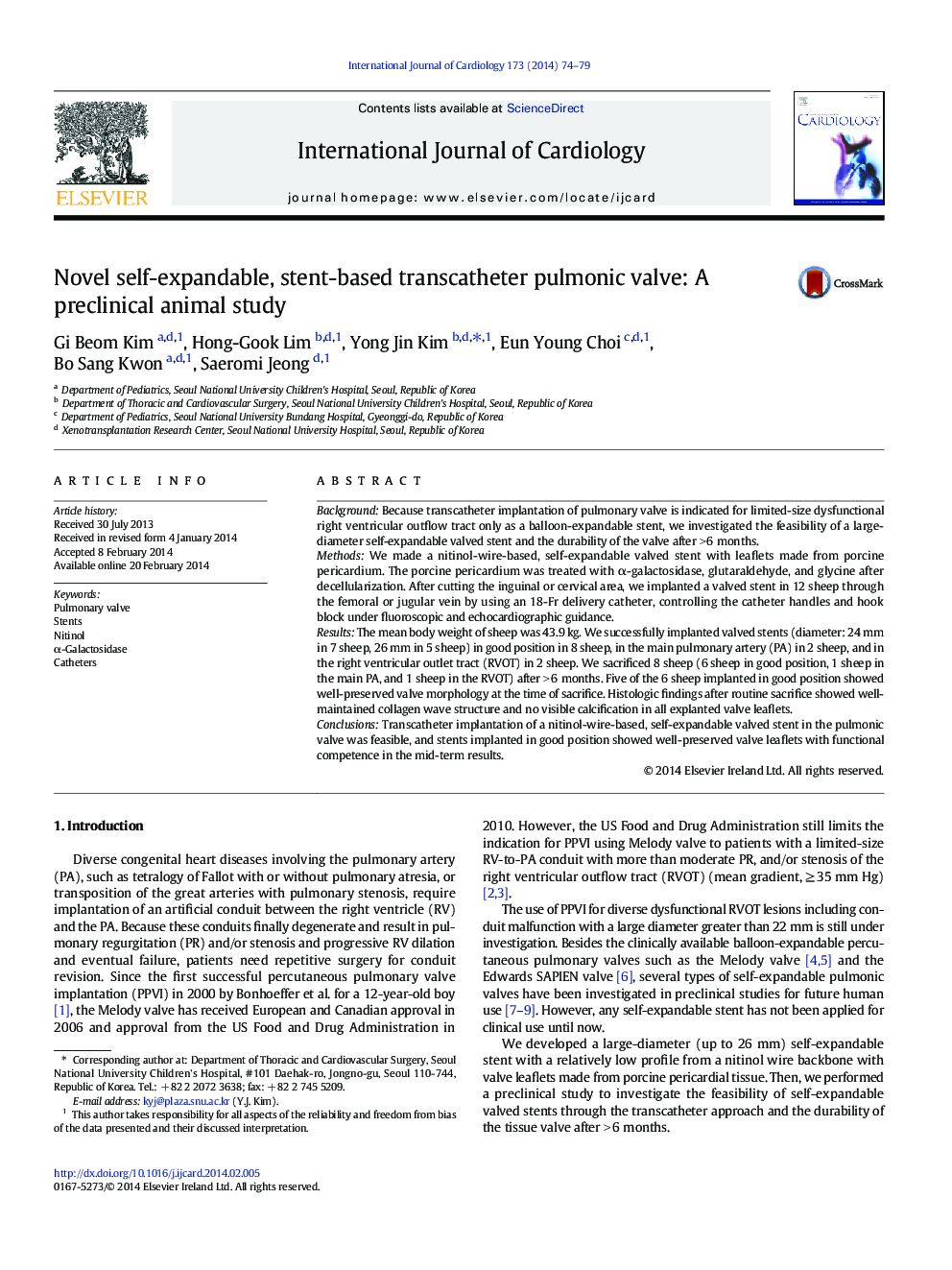| کد مقاله | کد نشریه | سال انتشار | مقاله انگلیسی | نسخه تمام متن |
|---|---|---|---|---|
| 2929252 | 1576189 | 2014 | 6 صفحه PDF | دانلود رایگان |

BackgroundBecause transcatheter implantation of pulmonary valve is indicated for limited-size dysfunctional right ventricular outflow tract only as a balloon-expandable stent, we investigated the feasibility of a large-diameter self-expandable valved stent and the durability of the valve after > 6 months.MethodsWe made a nitinol-wire-based, self-expandable valved stent with leaflets made from porcine pericardium. The porcine pericardium was treated with α-galactosidase, glutaraldehyde, and glycine after decellularization. After cutting the inguinal or cervical area, we implanted a valved stent in 12 sheep through the femoral or jugular vein by using an 18-Fr delivery catheter, controlling the catheter handles and hook block under fluoroscopic and echocardiographic guidance.ResultsThe mean body weight of sheep was 43.9 kg. We successfully implanted valved stents (diameter: 24 mm in 7 sheep, 26 mm in 5 sheep) in good position in 8 sheep, in the main pulmonary artery (PA) in 2 sheep, and in the right ventricular outlet tract (RVOT) in 2 sheep. We sacrificed 8 sheep (6 sheep in good position, 1 sheep in the main PA, and 1 sheep in the RVOT) after > 6 months. Five of the 6 sheep implanted in good position showed well-preserved valve morphology at the time of sacrifice. Histologic findings after routine sacrifice showed well-maintained collagen wave structure and no visible calcification in all explanted valve leaflets.ConclusionsTranscatheter implantation of a nitinol-wire-based, self-expandable valved stent in the pulmonic valve was feasible, and stents implanted in good position showed well-preserved valve leaflets with functional competence in the mid-term results.
Journal: International Journal of Cardiology - Volume 173, Issue 1, 15 April 2014, Pages 74–79